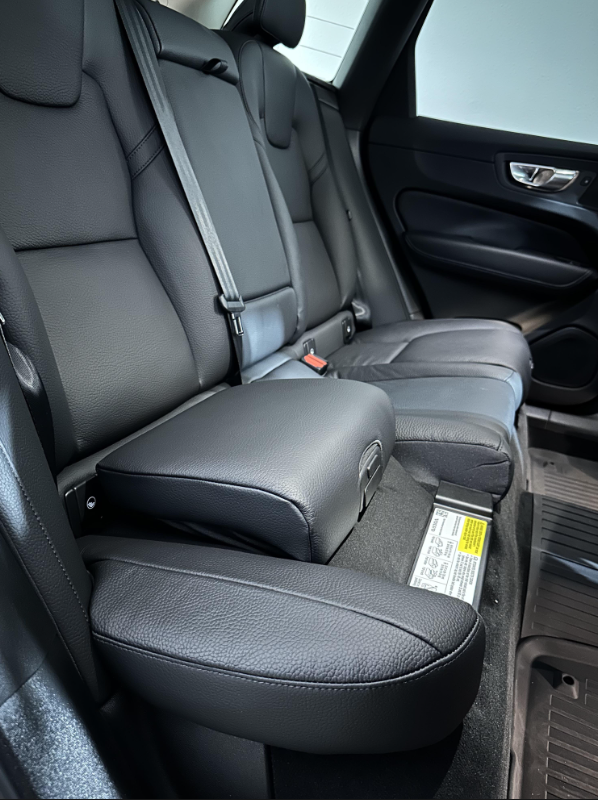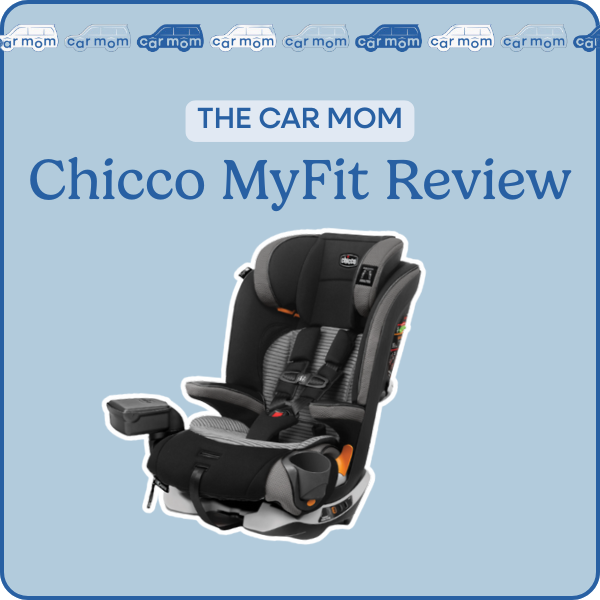Booster Seat Requirements: When Is It Safe To Transition To A Booster?
Transitioning your child from a car seat to a booster seat is an important milestone, but it can also be confusing. How do you know when they’re ready? What type of booster seat is best for your car? And how can you ensure they’re as safe as possible on the road?
If you’re new here, I’m Kelly, The Car Mom, and helping families find the best car and car seat for their needs is my thing. I’m a Child Passenger Safety Technician (CPST), mom of four, and if there is one thing I know better than anything, it’s how to set up a family car to make it work for any family’s needs.
Let’s break down everything you need to know about booster seats, including when to transition your child into one, how to use them safely, and what to look for when choosing the right seat for your vehicle.
Best Booster Seats For Kids:
Combination Seats:
High-Back Boosters:
Backless Boosters:
What Is a Booster Seat, Really?
A booster seat isn’t just a “big kid seat.” When a booster seat is used without a harness, your child is secured using the vehicle’s seat belt. The booster’s main job is to raise your child up so the seat belt fits properly—keeping the lap belt low on the hips and the shoulder belt across the chest and shoulder, not the neck or stomach.
At What Age Do You Switch A Child To A Booster Seat?
When your child has outgrown their harnessed car seat by height, weight, or both. The biggest thing to remember: there’s no need to rush. Your child should stay in their forward-facing harnessed seat until they have completely outgrown it by height or weight. If you’re unsure, it’s more than okay to wait—unless they’ve maxed out their seat’s limits.
Is Your Child Ready For A Booster? Ask Yourself:
Has my child reached the height or weight limit for their forward-facing harnessed seat?
Does the seat belt fit correctly with the booster, meaning the lap belt sits low on the hips and thighs, and the shoulder belt crosses the chest and shoulder (not the neck or face)?
Can my child sit upright the entire ride, without slouching, leaning, or playing with the seat belt?
Pro Tip: Age is less important than size and maturity. While some guidelines mention ages 5–7 as a typical range, focus on fit, not just age.
Types Of Booster Seats
To find the best booster seat for your car seat setup, the first step is understanding which type of seat is right for your child. Here are the different types of booster seats:
Combination seats
High-back booster seats
Backless booster seats
Do You Already Have A Combination Seat? You Should Check!
Combination seats are the ultimate multitaskers. These seats start as a forward-facing car seat with a 5-point harness and, when your child is ready, convert into a high-back booster that uses your car’s seat belt. If you already have one, you might not need to buy a separate booster seat at all—just transition the seat as your child grows.
If you’re not sure what kind of seat you have, check your manual or look up the model online. You may be surprised to find out your current car seat is actually a combination seat!
Best For:
Families looking for long-term value from one seat.
Kids who are ready to move out of their harnessed car seat, but not quite ready for a backless booster seat.
Some of my favorite combination seats are:
High-Back Boosters: Ideal For Younger Booster Riders
High-back boosters are perfect for children who are just transitioning out of their forward-facing car seat with a harness. These boosters provide head, neck, and torso support, making them ideal for younger kids who still need extra guidance to stay in the proper position during car rides.
Best For:
Children who are new to booster seats.
Cars with low seat backs or no headrests.
Families who want extra side-impact protection.
Some of my favorite high-back boosters are:
Backless Boosters: Perfect For Older, More Independent Riders
Backless boosters are a great option for older children who no longer need as much support but still require a boost to ensure proper seat belt fit. These boosters are compact, lightweight, and easy to move between vehicles.
Best For:
Older kids who have outgrown high-back boosters.
Cars with high seat backs or built-in headrests.
Families looking for a portable option for carpools or travel.
Pro Tip: Make sure your car has adjustable or high headrests if you’re using a backless booster. Without proper head support, your child is at risk of neck injuries in a crash.
Some of my favorite backless boosters are:
Did You Know The Volvo XC90 Has A Built-In Booster?
Here’s a fun fact for you: Volvo is the only car brand that still offers a built-in booster seat option.
If you’re driving a Volvo XC90 (or checking one out for your next family car), you might notice the integrated booster right in the center of the second row. It pops up from the seat cushion and gives your child the boost they need for a proper seat belt fit—no separate booster required.
Just keep in mind: built-in boosters in Volvos are best for kids who are big enough for a backless booster and can sit upright the whole ride. If your child tends to fall asleep or needs more support, a high-back booster might still be a better choice.
To read all about this built-in booster feature, check out my post: Cars With Built-in Booster Seats: Which Models Offer Integrated Options?
Think You Know Booster Safety? The Most Overlooked (But Critical) Tips For Parents
Once your child transitions to a booster, proper use is key to ensuring their safety. Booster seats are designed to work with your car’s seatbelt system, but only when used correctly. Follow these tips to ensure your child is safe and secure every time they ride:
Not Looking At How The Seatbelt Sits On Your Child’s Body
The lap belt should lie flat across the hips and thighs, not the stomach.
The shoulder belt should rest across the chest and shoulder, not touch the neck or face.
Allowing Your Child To Sit Incorrectly In Their Booster
Your child should sit all the way back against the car’s seat, with their knees bent comfortably at the edge. If they slouch or slide forward, the seat belt may not fit properly, which increases the risk of injury.
Forgetting To Buckle The Booster, Even If No One Is Riding In It
Whenever your booster seat is in the car—even if your child isn’t riding with you—make sure it’s buckled in. An unbuckled booster can become a dangerous projectile during a sudden stop or crash, putting you and other passengers at risk.
Does Your Car Have Non-Removable Or Angled Headrests?
One of the biggest challenges parents face when choosing a booster is dealing with non-removable or forward-angled headrests in their car. These headrests can interfere with proper booster installation, especially for high-back models that need to sit flush against the seatback.
Oftentimes, these headrests are angled forward, meaning the car seat is pushed forward (even a few inches), creating a gap and compromising the integrity of the car seat. For example, the Infiniti QX80 has these headrests in the third row, making car seat setup virtually impossible. If this were my family car, I would not be able to drive with all four of my kids because their car seats would be compromised.
I recommend the following to test your headrest and booster seat:
Install your car seat. Does it lie flat against the vehicle seatback, or is there a gap?
Check the car seat manual. If this step is confusing, reach out to your car seat’s manufacturer—they’re usually very helpful.
To read more about non-removable headrests and car seat installation, read my post: Can Non-Removable Headrests Work With Car Seats?
Check Your State’s Specific Regulations
Did you know that every state has its own laws regarding booster seat use? While most states base their requirements on age, weight, or height, some have stricter guidelines than others. To ensure compliance:
Refer to resources like NHTSA.gov (National Highway Traffic Safety Administration) for up-to-date information.
Your car manual is another valuable resource—it often includes specific instructions about car seat compatibility with features like non-removable headrests.
Don’t Rush The Switch: Wait Until Your Child Fully Outgrows Their Current Seat
When it comes to booster seats, there’s no harm in waiting until your child fully meets all readiness criteria. While it might be tempting to move them into a booster as soon as they outgrow their forward-facing car seat, rushing this transition can lead to improper seatbelt fit, and that puts your child at risk in the event of an accident.
It’s important to remember that every child grows and develops at their own pace. Just because other kids in your carpool group are already using boosters doesn’t mean your child needs one yet. Transitioning too soon can compromise their safety, so focus on what works best for your family and your child’s unique needs.
Have more questions about booster seats? Drop them in the comments! And for more safety tips, check out my latest posts:







